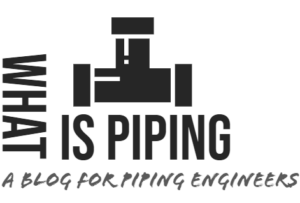Butterfly valves belong to the quarter-turn rotational motion valves family and are used primarily to stop, regulate, or start the flow. The term "butterfly" in a butterfly valve is actually a disk...
Piping Design Basics
Importance of Bourdon Effect, True and Effective Axial Force
Bourdon Effect on Pipelines Bourdon Effect is associated with the pressure elongation of the piping and pipeline systems. In piping and pipeline systems, elbows or bends are frequently used for...
A pipe flange is a circular disc-shaped piping component that attaches to a pipe for blocking or connecting other components like valves, nozzles, special items, etc. After welding, piping flanges...
Creep Rupture Usage Factor for Allowable Variations in Elevated Temperature Service
Appendix V of ASME B31.3 code covers the application of the Linear Life Fraction Rule, which provides a method for evaluating variations at elevated temperatures above design conditions where...
Minimum Design Metal Temperature or MDMT is the lowest temperature that a piping system with specified material and thickness can withstand. While designing piping systems (equipment) in cold regions...
What is a P&ID Drawing | P&ID Symbols | How to Read P & ID Drawings
The full form of P&ID is Process and Instrumentation Diagram. This is an engineering document developed by process engineers that shows the piping and other related items for process flow. A...
